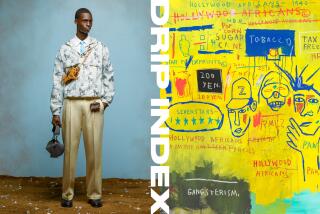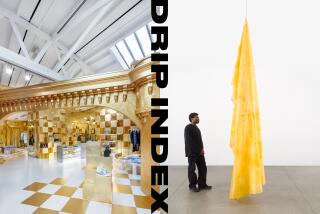Photos:: Lacy cuffs, Hawaiian shirts and Nehru jackets: An advance look at LACMA’s ‘Reigning Men’ style exhibition
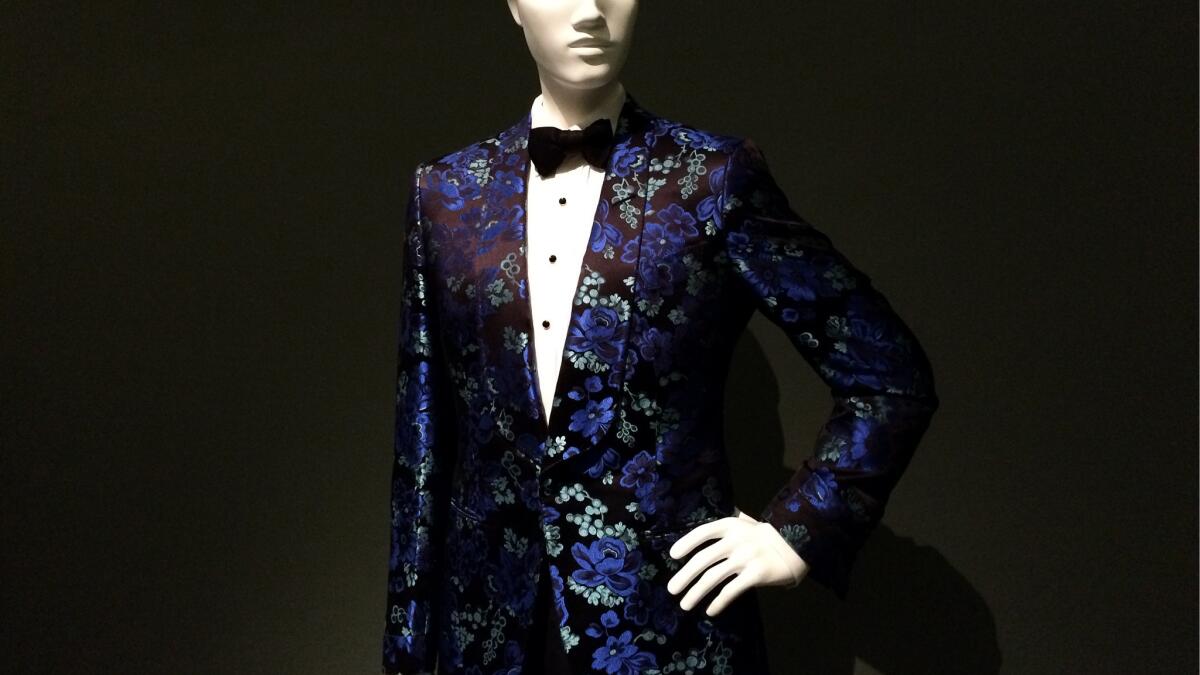
This 2014 tuxedo ensemble by Tom Ford is on view at LACMA as part of the fashion exhibition “Reigning Men.”
Slim culottes paired with powdered wigs. Dandyish suits in shades of candy pink. Leathers custom-designed for motorcycle rides. The upcoming fashion design exhibition at the Los Angeles County Museum of Art has these -- and many other styles -- covered.
“Reigning Men: Fashion in Menswear, 1715-2015” is a tour through three centuries of Western men’s fashions, drawn primarily from LACMA’s holdings. (The museum acquired an important collection of European clothing in 2009 that provided a number of the ensembles on view.)
Rather than a chronological tour, the show skips back and forth through time, clustering fashions by theme — be it military influence or the ways in which Eastern design has influenced the dress of the West. (Hint: The humble Hawaiian shirt has Japanese roots.)
Getting pride of place right at the entrance to the exhibition is the museum’s newly acquired zoot suit — which the museum won at auction after more than a decade of searching. (Though the suit hails from New Jersey, it is a style that resonates in L.A., where the Zoot Suit Riots of the 1940s put the garment in the news.)
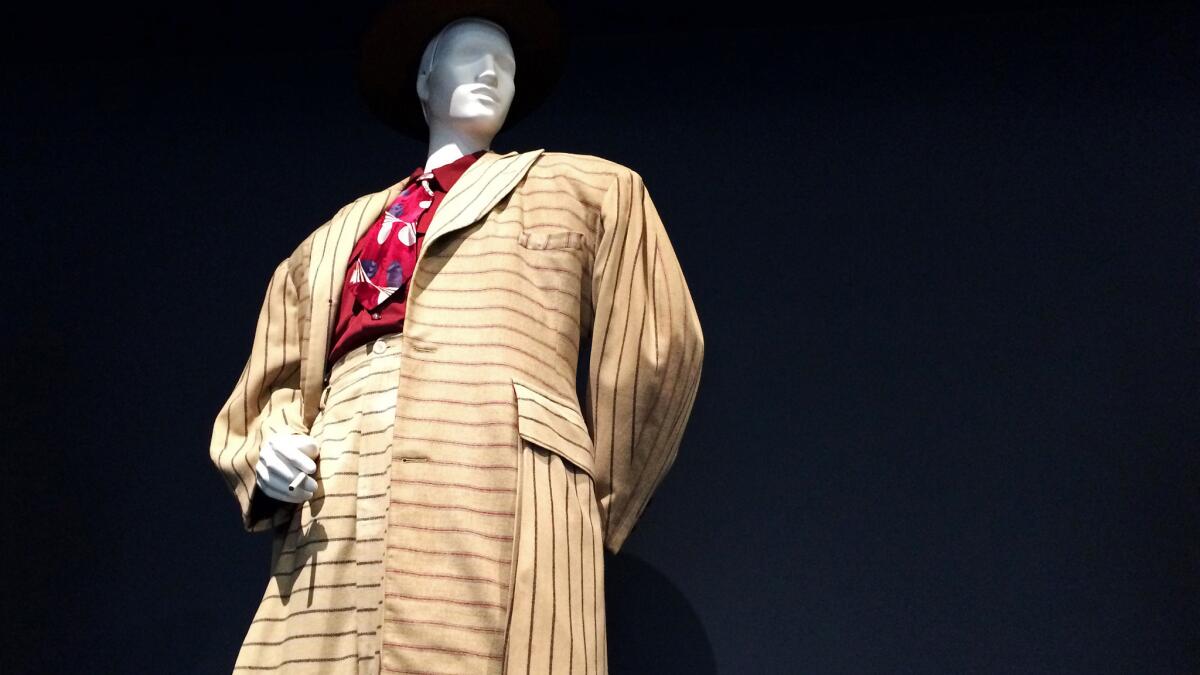
LACMA’s newly acquired zoot suit, from 1940-42.
From here, the exhibition travels through several centuries of men’s fashion — through styles favored by dandies, punks, the landed gentry, revolutionaries, athletes, military men and everyday Dapper Dans. There’s naughty stuff too — like a barely there 1997 Gucci thong swimsuit, as well as an explanatory video that gets into codpieces and “lift” technology.
Although the exhibition is compelling, there are clearly still gaps in the collection. In its final gallery, devoted to glitzier examples of men’s fashion, LACMA could have used a traje de charro — the glittering Mexican cowboy ensembles often identified with mariachi music in the U.S. The outfits, which at their most refined feature silver embroidery and silver buttons along the pant seam, are a ubiquitous part of the culture. (They are also unbearably sexy on the right dude.)
Two years ago, Mexico’s Olympic skier had a skiing suit made to resemble a traje de charro. And high-design stalwarts such as Saint Laurent have nodded to the design in recent years, with a pair of buckle-studded jeans that evoke the charro pant.
But that could be its own show — one that also features that other great Mexican contribution to international fashion: the pointy tribalera boot.
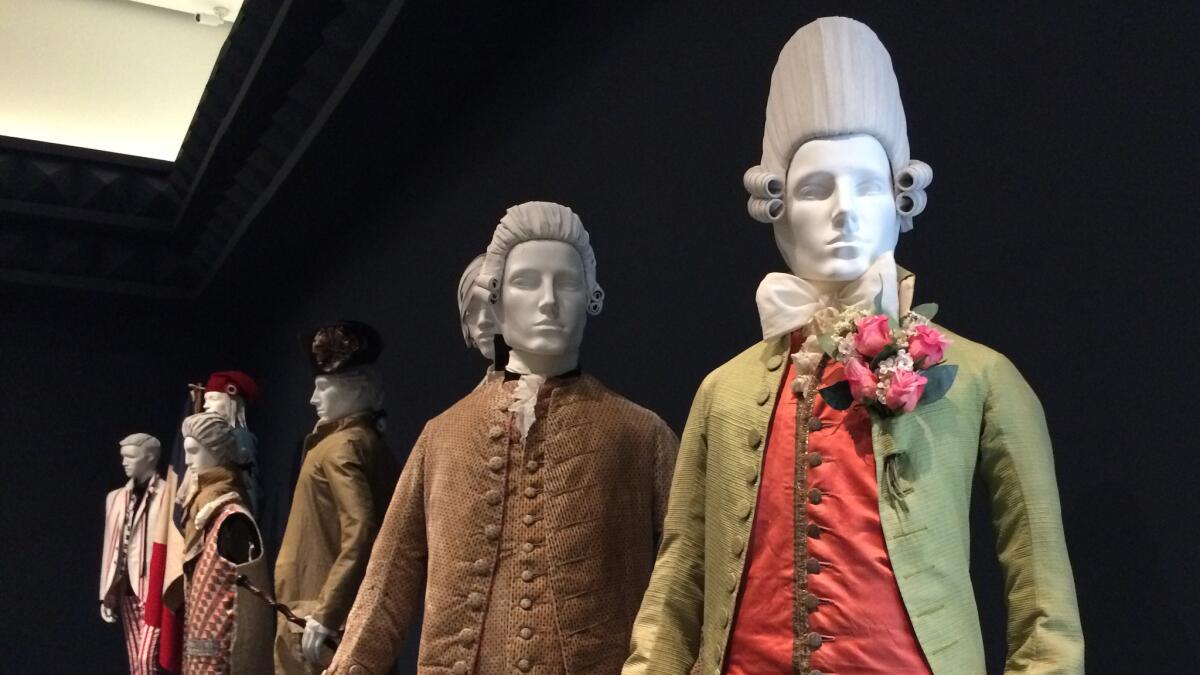
On display in the first gallery is the British “macaroni” look of late 18th century England, known for its bright colors and slim cuts.
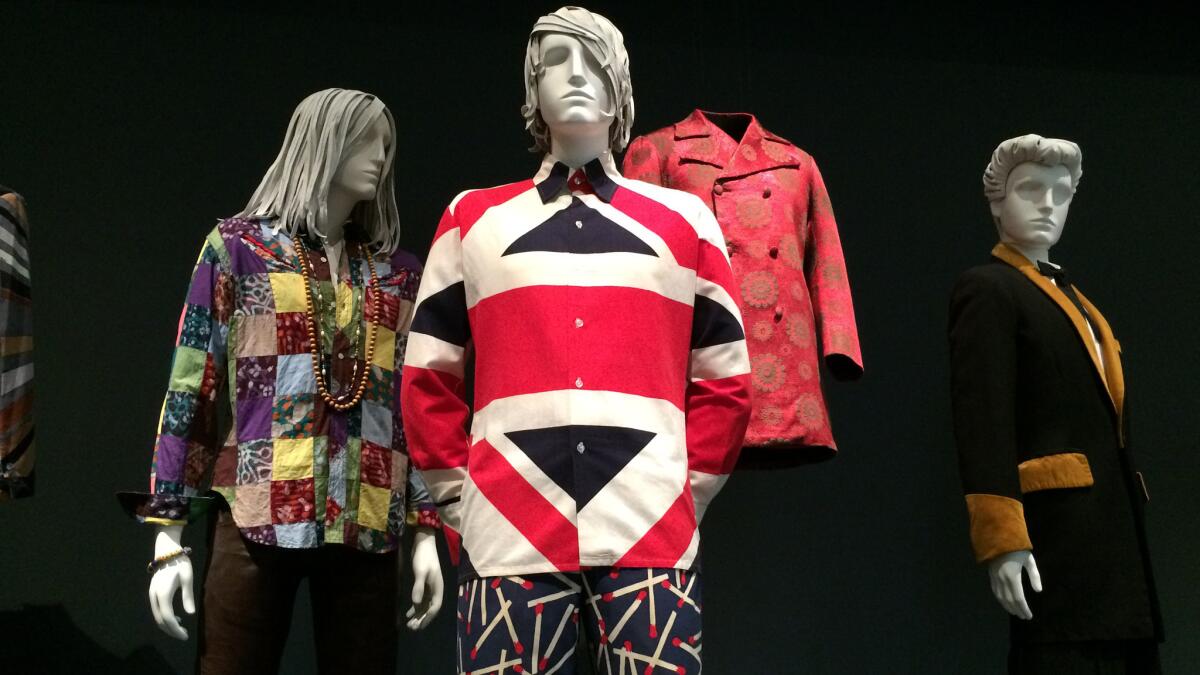
Also in the first gallery are fashions from the mid-20th century, including a patchwork shirt, left, from about 1969, a stylized Union Jack shirt from 1966-67 and a silk Teddy Boy jacket from the 1950s.
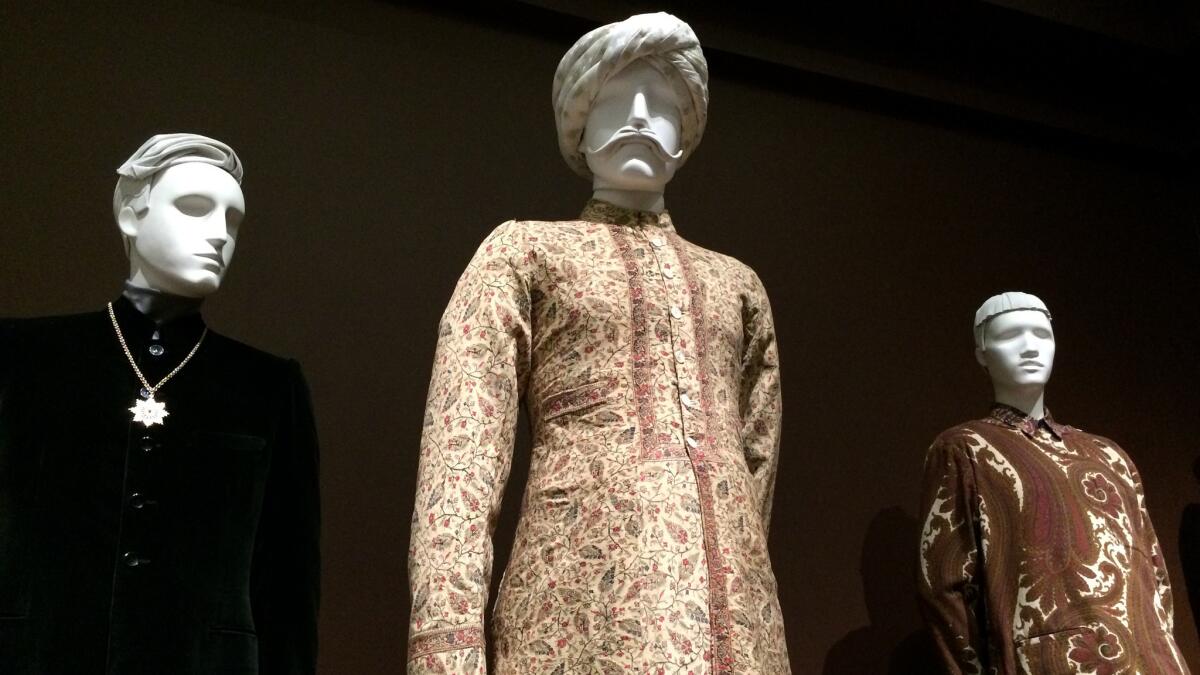
One part of the exhibition looks at the ways in which Eastern fashion has influenced the West. From left, a 1968 silk velvet Nehru suit by Gilbert Féruch, a late 19th century wool sherwani long coat from India and a paisley outfit from 2013-14 by Belgian designer Dries Van Noten.
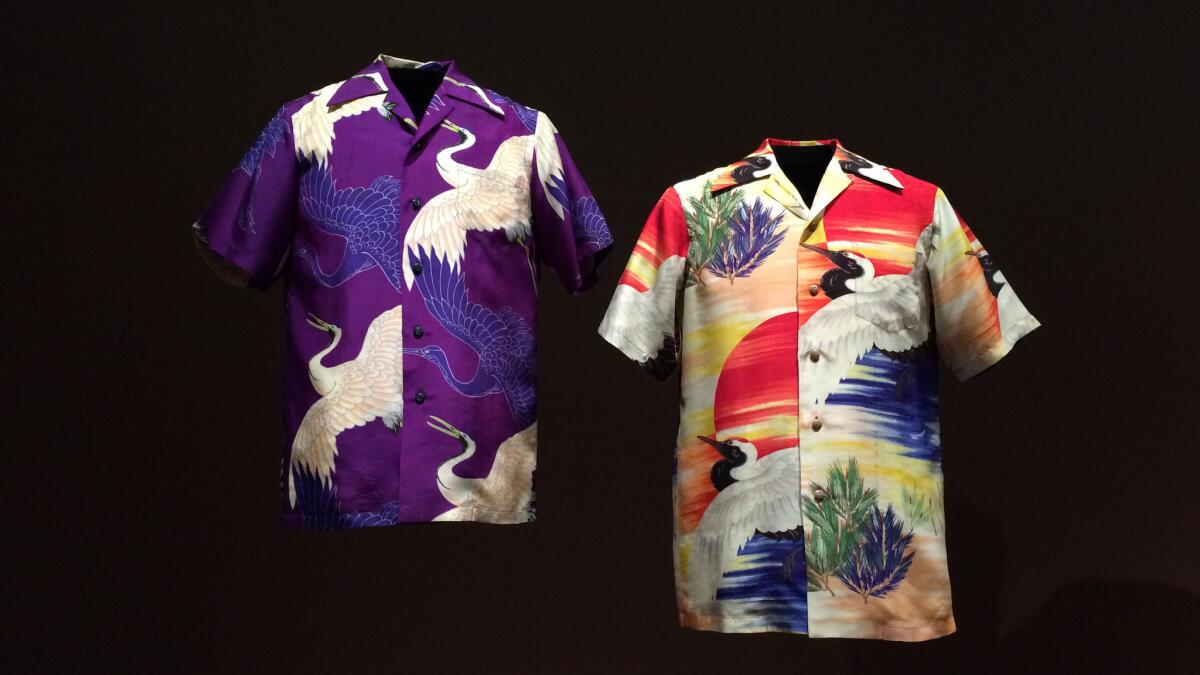
Initially known as the “aloha shirt,” the Hawaiian shirt was first produced by the Hawaiian shirt maker Musashiya from repurposed kimono fabrics. These examples date to 1952, before Hawaii had become a U.S. state.
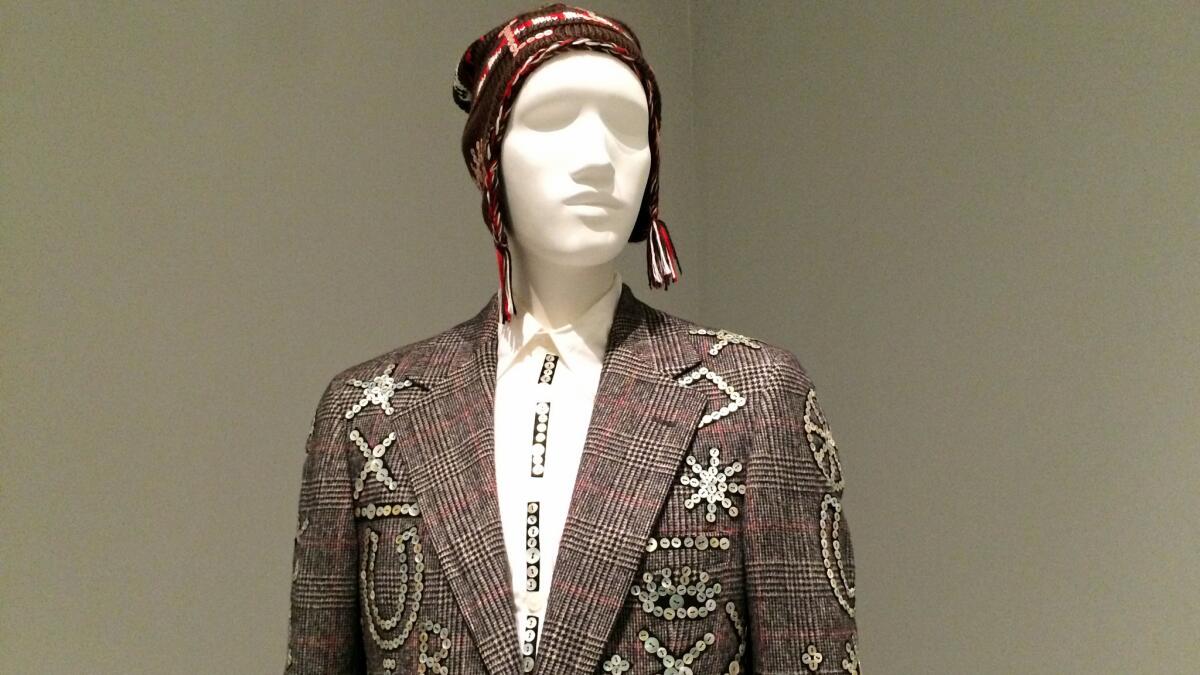
Johnson Hartig’s 2012-13 suit for the label Libertine is a contemporary nod to England’s Pearly Kings and Queens, working class figures who wear ensembles adorned with shimmering mother of pearl buttons.
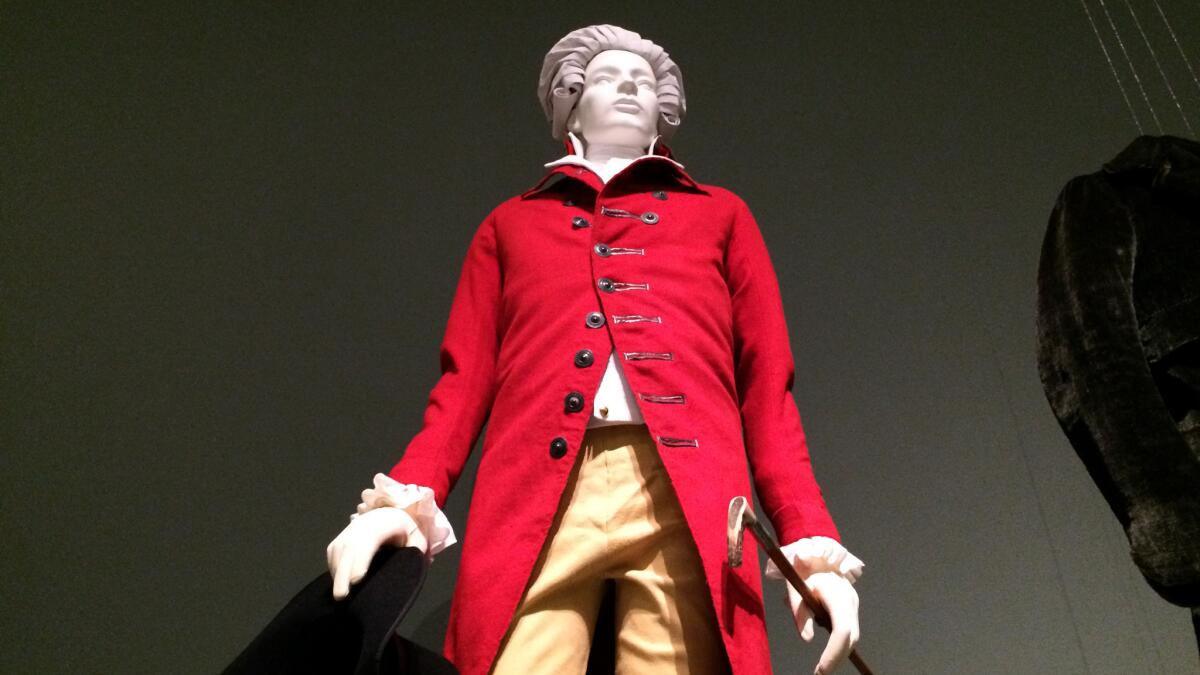
A riding coat and breeches from late 18th century England or France. The style began as a riding costume that men wore in the country exclusively, but the look was so popular, it went on to inspire other designs, such as the tailcoats of the 19th century.

One of my favorite installations in the show features these six quarter-size samples of men’s swimsuits from 1920s France, all bearing Deco designs.
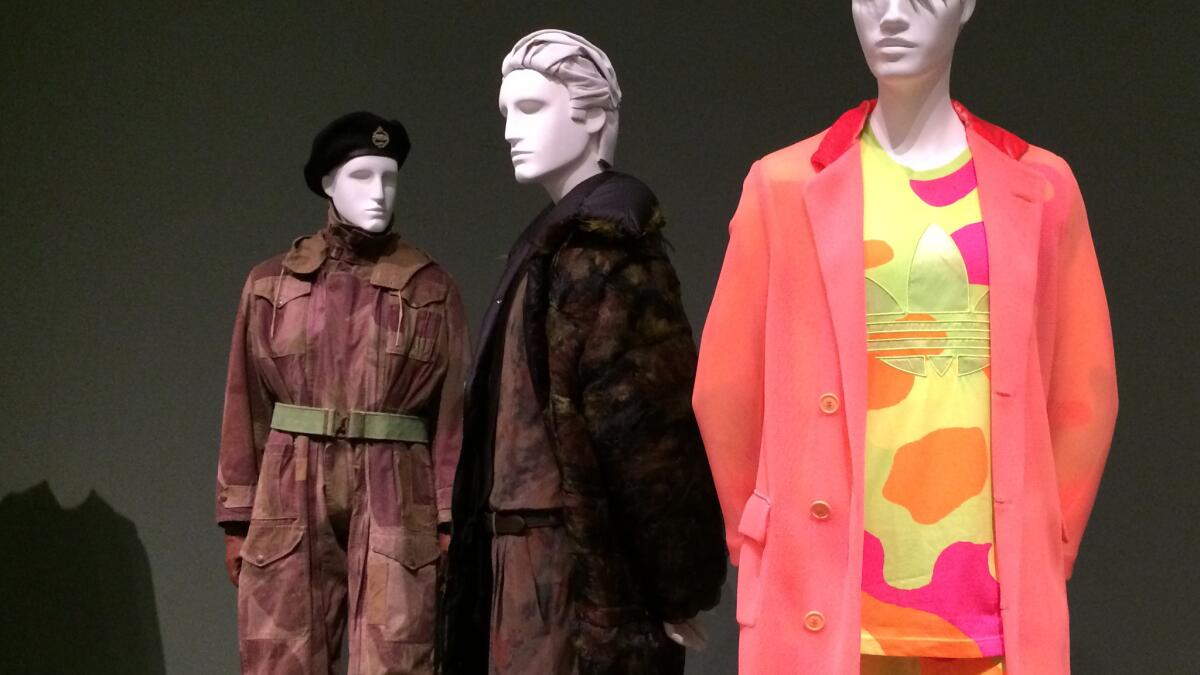
In a section devoted to military inspired-fashion, mannequins show a 20th century evolution of the style — including an English army tank suit from the 1940s, left, a camouflage ensemble by Jean Paul-Gaultier from his 2011-12 fall-winter collection, center, and a sportier 2013-14 outfit by Jeremy Scott.
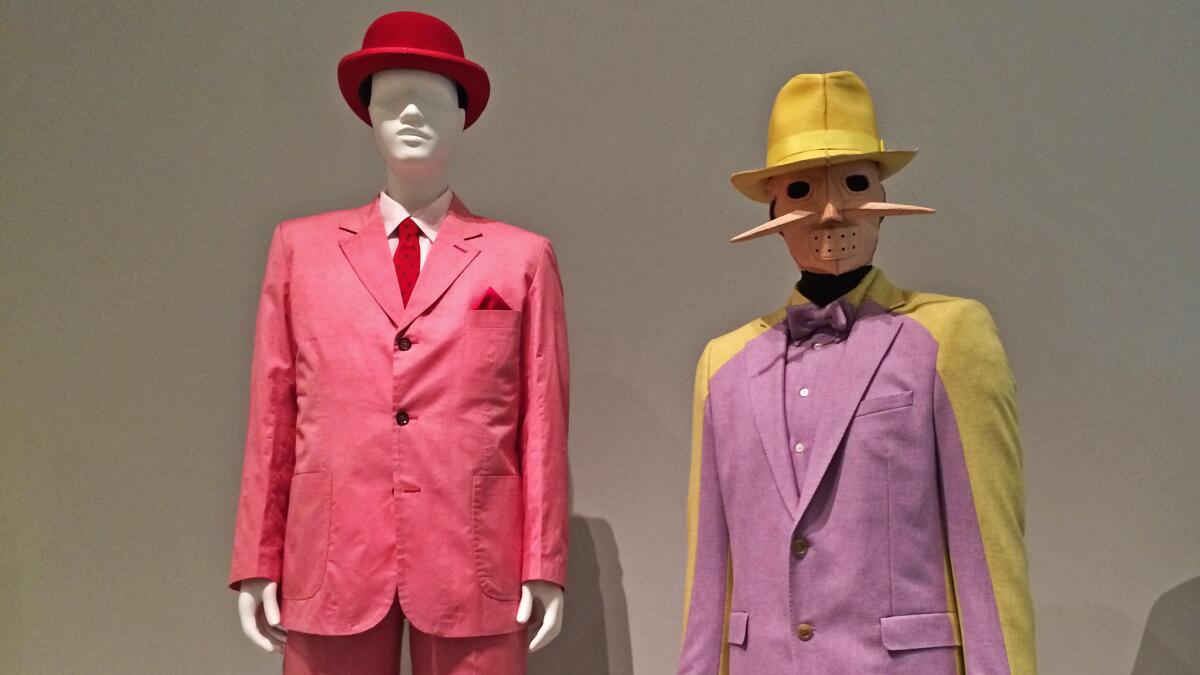
A gallery devoted to more splendid attire features a pink suit from 2005 belonging to a “sapeur,” a dandy of the Congo, left. It resonates well with a bright suit by Belgian designer Walter van Beirendonck, from a 2012 collection.
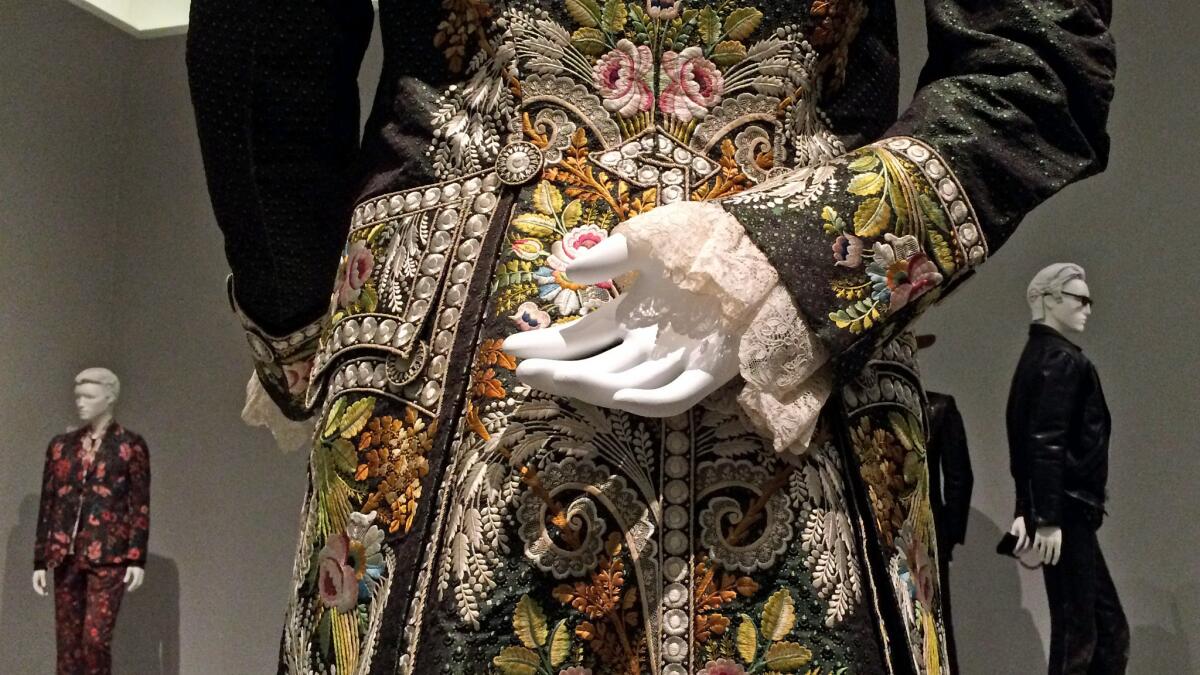
A coat from France from the early 19th century features delicately embroidered images of wheat and flowers.
“Reigning Men: Fashion in Menswear, 1715-2015” opens Sunday and runs through Aug. 25 at the L.A. County Museum of Art, 5905 Wilshire Blvd., Los Angeles, lacma.org.
Find me on Twitter @cmonstah.
More to Read
The biggest entertainment stories
Get our big stories about Hollywood, film, television, music, arts, culture and more right in your inbox as soon as they publish.
You may occasionally receive promotional content from the Los Angeles Times.

